Photo
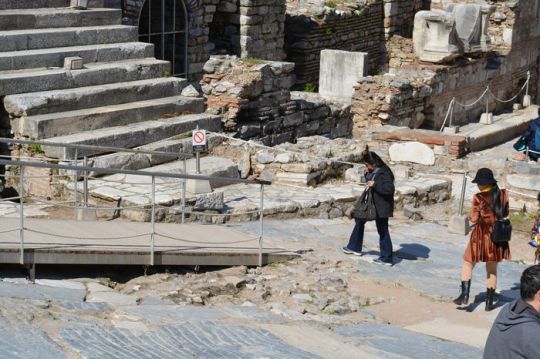
Celebrating Diversity A Joyful Extravaganza
The Festive Carnival Procession
Join the lively carnival procession, where participants from various cities and nations showcase their talents and interests. From folk ensembles and majorettes to local schools, theaters, and sports clubs, the parade offers a vibrant display of creativity. Look out for the Black Roses, rockers roaring on motorcycles, as the procession winds its way from the rose gardens of the Rose Institute throughout the city. Don’t miss out on the fun-filled atmosphere of this merry event!
International Folk Festival Youth of the Balkans
Experience the rich tapestry of Balkan cultures at the International Folk Festival, where over 250 dancers and musicians from Albania, Bulgaria, Greece, Macedonia, Romania, Serbia, Montenegro, and Turkey come together to share their unique folklore traditions. Immerse yourself in the colors of the Balkans as the spirit of peace and cooperation prevails through lively performances Private Turkey Tours.
Additional Festival Attractions
In addition to the main events, the festival offers a plethora of entertainment options. Enjoy plein air art sessions, artistic exhibitions, concerts, and the adrenaline-pumping Triathlon ROND Thorns – Extreme BG. Test your skills at the bomb test and partake in various supporting events designed to keep you entertained throughout the festivities.
Immersing in Nature’s Beauty A Rose-themed Experience
Indulge your senses in the beauty of blushing roses as you wander through the fields. Listen closely to their soft whispers as you draw near, and inhale deeply to savor their dewy fragrance. Feel the velvety texture of rose petals against your palms, reveling in their softness and freshness. Conclude your sensory journey with a cup of soothing rose tea, leaving you refreshed and rejuvenated.
0 notes
Photo
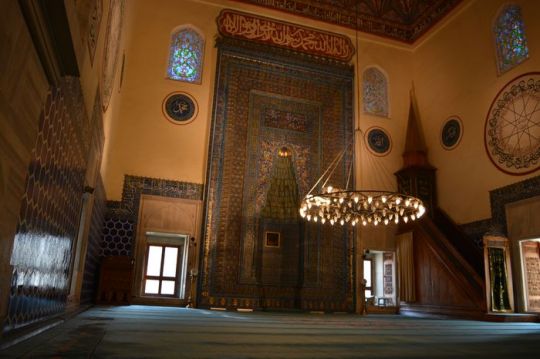
Sultan Ibrahim's Reign and Political Intrigues
During Sultan Ibrahim’s rule, political tensions rose as he sought to consolidate power by eliminating influential figures from the previous administration. One such target was Mustafa Pasha, a renowned guard of Sultan Murad IV. Mustafa Pasha’s refusal to provide cash for registration led to his execution, reflecting Sultan Ibrahim’s increasingly authoritarian rule. The imperial treasury, meanwhile, overflowed with vast reserves of jewelry, gold, and silver, totaling more than five thousand purses.
Historical Reflections on Sultan Ibrahim’s Reign
Ottoman historian Naima commented on Sultan Ibrahim’s actions, highlighting the importance of just and influential leadership in maintaining the empire’s stability. He emphasized that those who wield power unjustly often meet a similar fate, indicating the consequences of Sultan Ibrahim’s ruthless governance Istanbul Walking Tour.
Financial Mismanagement and Political Fallout
Sultan Ibrahim’s mismanagement of the state treasury pushed the empire to the brink of crisis. His obsession with securing his lineage led to extravagant spending from the treasury to appease the fears of potential succession issues. The harem was expanded to ensure the birth of a male heir, resulting in the birth of Prince Ahmet, draining the treasury further.
Tyranny and Extortion
Sultan Ibrahim’s rule was characterized by tyranny and extortion, as evidenced by his demands for exorbitant sums from provincial governors. His ruthless mandates, coupled with the treasury’s depletion, exacerbated tensions within the empire. The grand vizier faced harsh reprimands for failing to meet the sultan’s demands, reflecting Sultan Ibrahim’s increasingly erratic behavior.
Wealth Disparities and Royal Intrigues
While Sultan Ibrahim squandered the treasury, his mother, Queen Mother Kosem Mahpeyker, amassed immense wealth. Her estates boasted extensive riches, including thousands of intricately embroidered shawls and chests filled with treasures. This vast wealth stood in stark contrast to the empire’s financial woes under Sultan Ibrahim’s rule.
In summary, Sultan Ibrahim’s reign was marked by political intrigue, financial mismanagement, and a growing divide between the royal family’s wealth and the empire’s economic instability. His authoritarian tendencies and extravagant spending drained the treasury, leaving a legacy of turmoil and disparity within the Ottoman Empire.
0 notes
Photo

Tragic Discoveries in the Ruins
In the midst of a vast heap of debris, a somber scene unfolded before our eyes. Amidst the scattered remnants, a solitary skeleton lay, draped in a simple chemise. The skull adorned with a colored handkerchief, and the bony ankles adorned with embroidered footless stockings—typical attire of Bulgarian girls.
A Grim Landscape
Surveying the desolate surroundings, we noticed bones strewn about in all directions, remnants of lives lost and forgotten. The ground, once teeming with vitality, now served as a haunting reminder of the past. Below us, a hundred yards away, lay the remnants of a town.
Desolation and Destruction
Not a single roof remained intact, nor a wall standing upright. The town had succumbed entirely to ruin, resembling the ancient cities of Herculaneum or Pompeii after catastrophic events. The air was filled with a mournful lament, echoing like the keening of Irish mourners, permeating the valley with sorrow.
Grisly Revelations
Upon closer inspection of the skeletal remains, a chilling realization dawned upon us. The bones were predominantly small, accompanied by fragments of women’s clothing scattered amidst them. These were not just any victims; they were all women and girls, their lives brutally cut short.
Unthinkable Atrocities
From my vantage point atop my horse, I counted roughly a hundred skulls amidst the grim tableau. Many more lay hidden beneath the surface, while others had been scattered across the fields. Almost all the skulls were detached from their bodies, and the majority of skeletons were missing their heads—a stark indication of the horrors inflicted upon these women.
Haunting Encounters
Descending into the heart of the ravaged town, we encountered a haunting sight. Within the ruins of a dilapidated house sat a woman, her grief palpable as she rocked back and forth, clutching a babe to her chest. Beside her, another child observed us with a mixture of curiosity and apprehension Tour Packages Balkan.
A Heartbreaking Refrain
Her mournful chant, a lament for her lost home and husband, echoed through the ruins. With each repetition, her words carried the weight of unimaginable loss and despair. “My home, my husband,” she cried, her voice trembling with sorrow, the refrain echoing endlessly amidst the desolation.
In this once-thriving community, now reduced to rubble and sorrow, the tragedy of war and violence had left an indelible mark, a grim reminder of the fragility of life and the horrors humanity is capable of inflicting upon itself.
0 notes
Photo
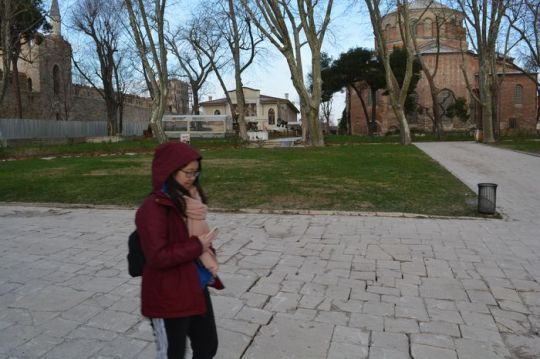
The Pioneering Efforts of Doctor Hristo Daskalov
In the mid-19th century, a notable figure emerged in the town of Turnovo, marking the beginning of systematic research into its rich history. Doctor Hristo Daskalov, fresh from completing his medical studies in 1858, dedicated himself to uncovering and documenting the historical sites and monuments scattered across the old capital.
Doctor Daskalov’s Contributions
Daskalov’s contributions were substantial and varied. He meticulously cataloged and studied landmarks such as the church of “Sveti Apostoli Petur i Pavel” (Saints Apostles Peter and Paul), providing detailed descriptions and even producing drawings of architectural plans. Additionally, his work extended to the church of “Sveti Dimitur” (Saint Dimitur), where he notably transcribed early Slavic inscriptions found within the altar area.
Publishing Milestones
In 1859, Daskalov’s efforts bore fruit with the publication of his work by the Academy of Sciences in Saint Petersburg. The following year, he further disseminated his findings through his own publication titled “The Findings from The Old Capital Turnovo,” which significantly contributed to Bulgarian historical scholarship Private Tours Istanbul.
Recognition and Legacy
Daskalov’s endeavors earned him recognition as the discoverer of Turnovo’s most significant monuments. His pioneering work laid the foundation for Bulgarian archaeology, leading Karel Shkorpil to later hail him as the “first Bulgarian archaeologist.”
The Birth of Archaeological Exploration in Turnovo
The early development of archaeological exploration in Turnovo coincided with the establishment of Bulgaria’s first archaeological society in 1879. Spearheaded by Professor Marin Drinov and supported by concerned citizens of Turnovo, the society’s mission was to unearth and document antiquities within Turnovo and beyond.
Inaugural Excavations
Under the leadership of society president Dr. Vasil Beron, the society commenced its first excavations on the hill Trapezitca. With the aid of soldiers, they unearthed the foundations of two churches, which later revealed themselves to be part of a tower and military fortification guarding the northeast gate.
Continued Efforts
Subsequent excavations in 1884 revealed the remains of two additional churches, further enriching the understanding of Turnovo’s historical landscape. Despite ambitions for systematic research across Trapezitca, Tsarevetc, and Momina Fortress, financial constraints hindered the society’s endeavors.
While the archaeological society met its demise in 1885 due to economic challenges, its brief existence marked a significant chapter in the pursuit of understanding Turnovo’s past. The groundwork laid by individuals like Doctor Hristo Daskalov and the society members paved the way for future archaeological endeavors in Bulgaria.
0 notes
Photo

The Pioneering Efforts of Doctor Hristo Daskalov
In the mid-19th century, a notable figure emerged in the town of Turnovo, marking the beginning of systematic research into its rich history. Doctor Hristo Daskalov, fresh from completing his medical studies in 1858, dedicated himself to uncovering and documenting the historical sites and monuments scattered across the old capital.
Doctor Daskalov’s Contributions
Daskalov’s contributions were substantial and varied. He meticulously cataloged and studied landmarks such as the church of “Sveti Apostoli Petur i Pavel” (Saints Apostles Peter and Paul), providing detailed descriptions and even producing drawings of architectural plans. Additionally, his work extended to the church of “Sveti Dimitur” (Saint Dimitur), where he notably transcribed early Slavic inscriptions found within the altar area.
Publishing Milestones
In 1859, Daskalov’s efforts bore fruit with the publication of his work by the Academy of Sciences in Saint Petersburg. The following year, he further disseminated his findings through his own publication titled “The Findings from The Old Capital Turnovo,” which significantly contributed to Bulgarian historical scholarship Private Tours Istanbul.
Recognition and Legacy
Daskalov’s endeavors earned him recognition as the discoverer of Turnovo’s most significant monuments. His pioneering work laid the foundation for Bulgarian archaeology, leading Karel Shkorpil to later hail him as the “first Bulgarian archaeologist.”
The Birth of Archaeological Exploration in Turnovo
The early development of archaeological exploration in Turnovo coincided with the establishment of Bulgaria’s first archaeological society in 1879. Spearheaded by Professor Marin Drinov and supported by concerned citizens of Turnovo, the society’s mission was to unearth and document antiquities within Turnovo and beyond.
Inaugural Excavations
Under the leadership of society president Dr. Vasil Beron, the society commenced its first excavations on the hill Trapezitca. With the aid of soldiers, they unearthed the foundations of two churches, which later revealed themselves to be part of a tower and military fortification guarding the northeast gate.
Continued Efforts
Subsequent excavations in 1884 revealed the remains of two additional churches, further enriching the understanding of Turnovo’s historical landscape. Despite ambitions for systematic research across Trapezitca, Tsarevetc, and Momina Fortress, financial constraints hindered the society’s endeavors.
While the archaeological society met its demise in 1885 due to economic challenges, its brief existence marked a significant chapter in the pursuit of understanding Turnovo’s past. The groundwork laid by individuals like Doctor Hristo Daskalov and the society members paved the way for future archaeological endeavors in Bulgaria.
0 notes
Photo
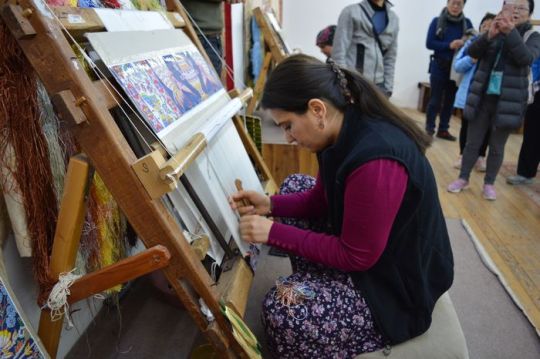
The Arrival of the Slavs in the Balkans
Background
The Slavs, originating from the eastern regions of the Russian steppe, arrived in the Balkan Peninsula around the 5th century. Over the next two and a half centuries, they gradually occupied the area, pushing aside the local Hellenized population, especially in Thrace and Macedonia. By the end of this period, the Slavs had settled across the entire peninsula, except for the coastal regions where the existing inhabitants relied on the military strength of Byzantium to keep the new settlers away.
Byzantine Relations with the Slavs
The Byzantine emperors did not see the Slavs as enemies. The Slavs were peaceful tribes who became farmers and herders. They were not aggressive or politically driven. Over time, the Slavic settlers were even called upon to fight alongside the Byzantines against common enemies. The Byzantine ruling court viewed the gradual settlement of Slavic farmers and herdsmen in the Balkans favorably City Tour Istanbul.
Old Bulgarians’ Arrival (Around 650 A.D.)
Around 650 A.D., a powerful group of Old Bulgarians, led by their khan Asparukh, arrived at the banks of the Danube, dividing Romania from Bulgaria. Settling in North Dobrudja, they initiated raids on Byzantine territory. The Old Bulgarians had originated from the region between the Volga River and its tributary, the Kama. Unlike the Slavs, they were more politically oriented. Over the centuries, small migrant groups of Old Bulgarians had integrated into Slavic communities. The Old Bulgarians, skilled organizers, extended their political influence over the Slavs, providing them with a name, a sense of unity, and leadership. They adopted the Slavs’ language and embraced a greater sense of democratic policy.
0 notes
Photo
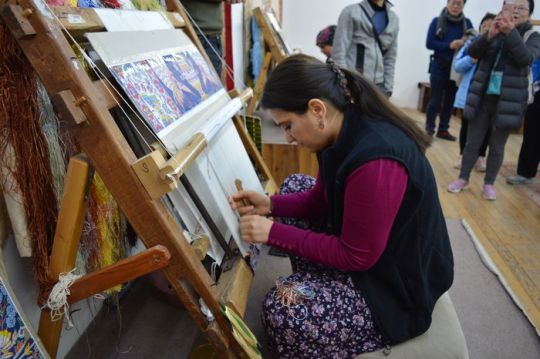
The Arrival of the Slavs in the Balkans
Background
The Slavs, originating from the eastern regions of the Russian steppe, arrived in the Balkan Peninsula around the 5th century. Over the next two and a half centuries, they gradually occupied the area, pushing aside the local Hellenized population, especially in Thrace and Macedonia. By the end of this period, the Slavs had settled across the entire peninsula, except for the coastal regions where the existing inhabitants relied on the military strength of Byzantium to keep the new settlers away.
Byzantine Relations with the Slavs
The Byzantine emperors did not see the Slavs as enemies. The Slavs were peaceful tribes who became farmers and herders. They were not aggressive or politically driven. Over time, the Slavic settlers were even called upon to fight alongside the Byzantines against common enemies. The Byzantine ruling court viewed the gradual settlement of Slavic farmers and herdsmen in the Balkans favorably City Tour Istanbul.
Old Bulgarians’ Arrival (Around 650 A.D.)
Around 650 A.D., a powerful group of Old Bulgarians, led by their khan Asparukh, arrived at the banks of the Danube, dividing Romania from Bulgaria. Settling in North Dobrudja, they initiated raids on Byzantine territory. The Old Bulgarians had originated from the region between the Volga River and its tributary, the Kama. Unlike the Slavs, they were more politically oriented. Over the centuries, small migrant groups of Old Bulgarians had integrated into Slavic communities. The Old Bulgarians, skilled organizers, extended their political influence over the Slavs, providing them with a name, a sense of unity, and leadership. They adopted the Slavs’ language and embraced a greater sense of democratic policy.
0 notes
Photo
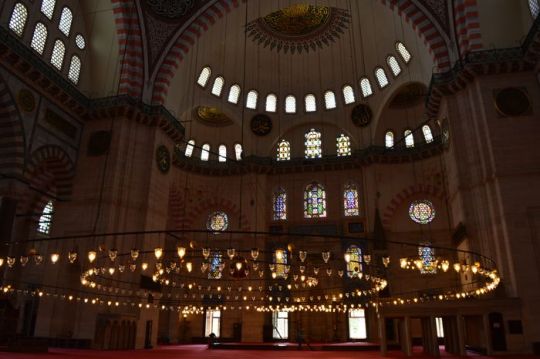
Developments and Challenges
Shaping Bulgarian Social and Political Life
As the 19th century drew to a close, Bulgaria witnessed the complete shaping of its political landscape. However, as the 20th century dawned and World War I loomed, the political spectrum remained diverse, lacking powerful parties or a clear left-right-center division. This era saw six bourgeois parties, primarily distinguished by their members’ stance on Russia—Russophile or Russophobe.
Lack of Clear Divisions
The political panorama in Bulgaria during the early 20th century was marked by extreme diversity. Despite this, there was an absence of definitively powerful parties and a traditional left-right-center division. The distinguishing factor among the six bourgeois parties was their stance on foreign policy, particularly their Russophile or Russophobe orientation.
Political Career for Personal Enrichment
In Bulgaria, a politically driven career was often perceived as a path to personal enrichment. This was especially true in a country grappling with poverty. Notably, Ferdinand himself occasionally sowed discord among parties and their factions, strategically consolidating his control over them Private Turkey Tours.
People’s Party Takes Charge
Following the fall of Stambolov, the People’s Party, led by the adept politician K. Stoilov, governed Bulgaria for five years. Stoilov successfully reestablished relations with Russia. However, the Macedonian issue remained a significant challenge. The political and social conditions in Macedonia, still under Turkish rule, suggested that an uprising was the only recourse for local Bulgarians.
A Call for Uprising
Macedonia, along with the Odrin region in Thrace, faced ongoing Turkish rule. The Sultan showed no inclination to implement the reforms outlined in the Treaty of Berlin for the Christian provinces of European Turkey. Misery, insecurity, oppressive taxation, and despair prevailed in these regions. Thousands of Bulgarians from Macedonia and Eastern Thrace sought refuge elsewhere.
Upholding Bulgarian Spirit
Amidst the challenges, the Exarchate emerged as the sole guardian of the Bulgarian spirit in Macedonia and the Odrin region. In 1893, determined patriots established the Internal Macedonian-Odrin Revolutionary Organization (IMORO) in Thessaloniki. This clandestine organization became a crucial force in defending Bulgarian interests.
A Complex Period of Transition
The early 20th century marked a complex period for Bulgaria, characterized by diverse political landscapes, foreign policy nuances, and regional challenges. The struggle for independence and the preservation of the Bulgarian identity continued, with organizations like IMORO playing a crucial role in this turbulent era.
0 notes
Photo
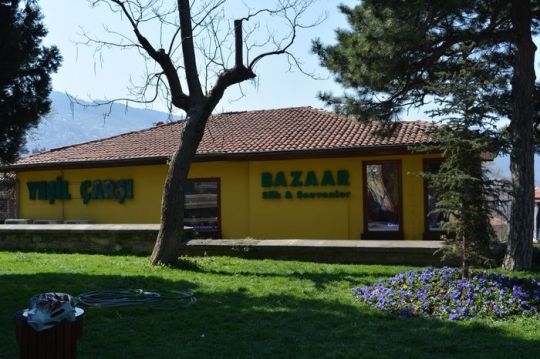
The Unveiling of Unspeakable Horrors
Women’s Descent into Despair
Confessions of Dishonour A Brave Prelude
In the shadow of unthinkable horrors, women found courage in the act of confessional narration. They stood before the world, their voices trembling yet resolute, as they uttered the word “dishonour.” But what lay ahead was a descent into a darkness far more profound and agonizing.
Beyond Dishonour The Stain of Defilement
The narratives unfold, revealing that for women subjected to the brutality of Turkish oppression, dishonour was but a prelude. A woman’s suffering extended beyond mere shame; she faced a harrowing journey of being stained, defiled, and degraded. These stories depict a descent into a nightmarish reality, where self-loathing becomes an indelible mark, and the mirror reflects a stranger tainted by the hands of cruelty.
Echoes of Despair A Mother’s Agony for Her Daughters
The women, in their heart-wrenching confessions, weren’t shedding tears for themselves alone. A more profound grief engulfed them as they recounted the atrocities inflicted upon their daughters. Innocent and tender girls of twelve and fifteen, even children Balkan Tours, became victims of the same brutalization. A mother’s agony extended beyond personal suffering to encompass the unbearable pain of witnessing the desecration of her offspring.
Silent Screams Why Share the Unbearable?
The question arises—why these women chose to come forward, to expose their deepest wounds and utter the unspeakable? It transcends the burden of personal injustice and the foul, dreadful wrongs inflicted upon them. Perhaps, it’s the spirit wounded beyond endurance, impelled by an invisible force to scream out the injustices that Heaven must hear, if not see. A feeble hope, perhaps, that someday justice will prevail, and the avenging hand of retribution will reach those responsible.
The Unheard Stories Unspeakable Horrors Left Untold
The sheer horror embedded in these narratives defies repetition. The tales of unspeakable brutality, though left untold here, serve as a testament to the depth of human suffering. In a world where such atrocities persist, the voices that dare to break the silence become beacons, exposing the need for justice, compassion, and an unwavering commitment to end the cycle of cruelty.
0 notes
Photo
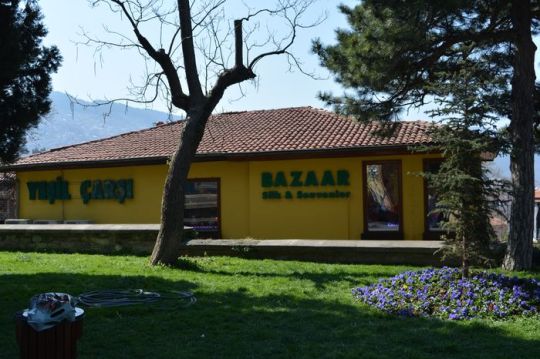
The Unveiling of Unspeakable Horrors
Women’s Descent into Despair
Confessions of Dishonour A Brave Prelude
In the shadow of unthinkable horrors, women found courage in the act of confessional narration. They stood before the world, their voices trembling yet resolute, as they uttered the word “dishonour.” But what lay ahead was a descent into a darkness far more profound and agonizing.
Beyond Dishonour The Stain of Defilement
The narratives unfold, revealing that for women subjected to the brutality of Turkish oppression, dishonour was but a prelude. A woman’s suffering extended beyond mere shame; she faced a harrowing journey of being stained, defiled, and degraded. These stories depict a descent into a nightmarish reality, where self-loathing becomes an indelible mark, and the mirror reflects a stranger tainted by the hands of cruelty.
Echoes of Despair A Mother’s Agony for Her Daughters
The women, in their heart-wrenching confessions, weren’t shedding tears for themselves alone. A more profound grief engulfed them as they recounted the atrocities inflicted upon their daughters. Innocent and tender girls of twelve and fifteen, even children Balkan Tours, became victims of the same brutalization. A mother’s agony extended beyond personal suffering to encompass the unbearable pain of witnessing the desecration of her offspring.
Silent Screams Why Share the Unbearable?
The question arises—why these women chose to come forward, to expose their deepest wounds and utter the unspeakable? It transcends the burden of personal injustice and the foul, dreadful wrongs inflicted upon them. Perhaps, it’s the spirit wounded beyond endurance, impelled by an invisible force to scream out the injustices that Heaven must hear, if not see. A feeble hope, perhaps, that someday justice will prevail, and the avenging hand of retribution will reach those responsible.
The Unheard Stories Unspeakable Horrors Left Untold
The sheer horror embedded in these narratives defies repetition. The tales of unspeakable brutality, though left untold here, serve as a testament to the depth of human suffering. In a world where such atrocities persist, the voices that dare to break the silence become beacons, exposing the need for justice, compassion, and an unwavering commitment to end the cycle of cruelty.
0 notes
Photo
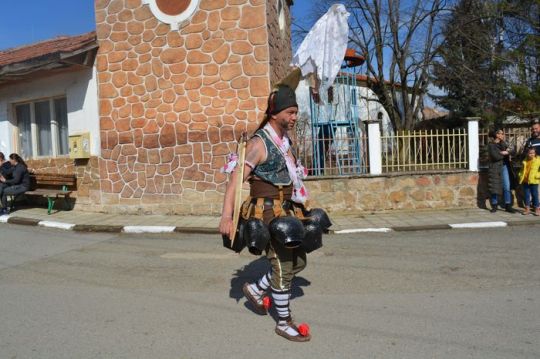
The Resilient Spirit of Perustitza's Daughters
A Tale of Courage Amidst Chaos
In the harrowing tale of Perustitza’s siege, a remarkable narrative emerges, spotlighting the indomitable courage of its young girls who, facing imminent danger, defied societal norms to ensure their survival. The absence of a clear command structure among the villagers made their defense against the menacing Bashi-Bazouks all the more challenging, yet the community rallied together to confront the impending threat.
During the three days from Tuesday to Thursday, the villagers found themselves in a desperate struggle for survival. What is particularly striking is the absence of a discernible leader orchestrating the defense. Despite this leadership vacuum, the community displayed a collective resolve by distributing rations, posting sentries, and projecting a bold front against their aggressors.
Amidst this chaos, a curious and courageous decision was made regarding the village’s young girls. Recognizing the potential brutality they might face if captured by the Bashi-Bazouks, a collective decision was reached within the confines of the village church. All girls over the age of ten were to don boys’ clothing, transforming their appearance in the hopes of escaping the horrifying fate that awaited them if the worst came to pass.
The Armenian girl, a witness to this extraordinary transformation, recounts the efforts of her peers to assume a disguise. Nearly all the young girls, fueled by a determination to protect themselves, adopted the attire of their brothers. They skillfully cut off their long hair and endeavored to pass as boys, a desperate measure taken to evade the infamous brutality of the Bashi-Bazouks.
In the face of such adversity, these girls displayed immense bravery. The Armenian girl, although offered a boys’ suit, opted to endure the siege in her own attire. She notes that many of the disguised girls expressed a willingness to wield a weapon in defense of their community, underscoring the shared commitment to survival among the private tours bulgaria besieged villagers. Unfortunately, the scarcity of arms, even among the men, meant that the women were left without means to actively contribute to the defense.
Protective walls
The resilience of these girls, however, is not without its share of tragedy. As they ventured outside the protective walls, they were often mistaken for boys and fell victim to ruthless gunfire. Many lost their lives in this tragic case of mistaken identity. Despite the perils they faced, those who survived did so with their honor intact. The bright pairs of eyes that met the gaze of onlookers, undeterred by the missing tresses, spoke volumes of the unyielding spirit of Perustitza’s daughters.
In the face of chaos, uncertainty, and the ever-present threat of brutality, the young girls of Perustitza made a bold stand, challenging societal norms and demonstrating a resilience that defied the darkest expectations. Their story is a testament to the strength that can be found in unity and the unwavering human spirit in the face of adversity. Perustitza’s daughters, through their courage and sacrifice, etch a chapter of inspiration in the annals of resilience and defiance.
0 notes
Photo
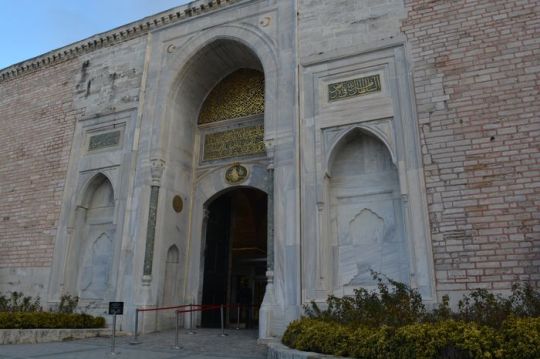
TURKISH ATROCITIES IN BULGARIA
Scattered over England and the whole of Europe, MacGahan’s reports contributed to create out of the April uprising a process testing the political and moral conscience of the epoch. In that above all else consists the supreme importance of these pages stained with blood.
THE TURKISH ATROCITIES IN BULGARIA
The Bulgarian Atrocities: “Daily News” Special Inquiry.
Philippopolis, July 28.
I arrived here three days ago on a mission of investigation. Philippopolis, it may be mentioned, is the principal town in that part of Bulgaria which was the scene of the exploits of the Bashi-Bazouks, and is therefore the best or rather the only point at which trustworthy information can be obtained respecting the atrocities now exciting so much indignation in Europe. I found that Mr. Baring had already arrived and commenced the work of investigation.
American Consul- General
Mr. Schuyler, the American Consul- General, likewise arrived, partly on a similar errand, partly to inquire into the advisability of establishing a vice-consulate, or taking other measures for the protection of a few American missionary families established throughout the country. The other consuls, I find, made reports to their respective Governments some time ago, and are now engaged in collecting further information relating to the insurrection City Tour Istanbul.
It is a curious fact that while the Austrian, Greek, Russian, and French Governments all have consuls in this place, who give minute and detailed reports of everything that happens here, the English Government, which one would think equally interested in receiving prompt and correct information, should have no agent at all. There is an English consul at Adrianople, a very worthy gentleman, but his health is so shattered that he is utterly unfit for service of any kind. It is therefore scarcely astonishing that the English Government should know less of what is passing in Turkey than other Governments, and far less than well-informed newspapers.
0 notes
Photo
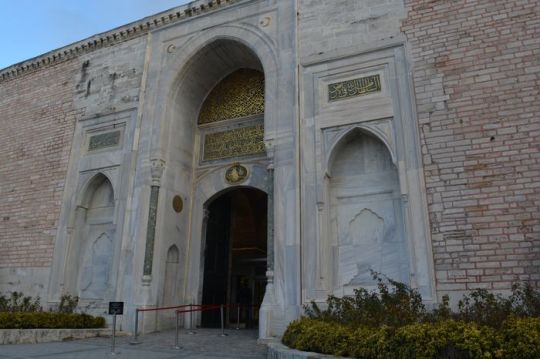
TURKISH ATROCITIES IN BULGARIA
Scattered over England and the whole of Europe, MacGahan’s reports contributed to create out of the April uprising a process testing the political and moral conscience of the epoch. In that above all else consists the supreme importance of these pages stained with blood.
THE TURKISH ATROCITIES IN BULGARIA
The Bulgarian Atrocities: “Daily News” Special Inquiry.
Philippopolis, July 28.
I arrived here three days ago on a mission of investigation. Philippopolis, it may be mentioned, is the principal town in that part of Bulgaria which was the scene of the exploits of the Bashi-Bazouks, and is therefore the best or rather the only point at which trustworthy information can be obtained respecting the atrocities now exciting so much indignation in Europe. I found that Mr. Baring had already arrived and commenced the work of investigation.
American Consul- General
Mr. Schuyler, the American Consul- General, likewise arrived, partly on a similar errand, partly to inquire into the advisability of establishing a vice-consulate, or taking other measures for the protection of a few American missionary families established throughout the country. The other consuls, I find, made reports to their respective Governments some time ago, and are now engaged in collecting further information relating to the insurrection City Tour Istanbul.
It is a curious fact that while the Austrian, Greek, Russian, and French Governments all have consuls in this place, who give minute and detailed reports of everything that happens here, the English Government, which one would think equally interested in receiving prompt and correct information, should have no agent at all. There is an English consul at Adrianople, a very worthy gentleman, but his health is so shattered that he is utterly unfit for service of any kind. It is therefore scarcely astonishing that the English Government should know less of what is passing in Turkey than other Governments, and far less than well-informed newspapers.
0 notes
Photo
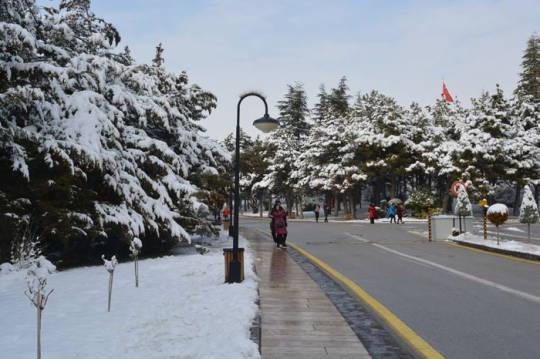
About 200 young girls
We asked about the skulls and bones we had seen up on the hill upon first arriving in the village where the dogs had barked at us. These, we were told, were the bones of about 200 young girls, who had first been captured and particularly reserved for a worse fate than death. They had been kept till the last; they had been in the hands of their captors for several days— for the burning and the pillaging had not all been accomplished in a single day—and during this time they had suffered all it was possible that poor weak trembling girls could suffer at the hands of brutal savages Private Tours Istanbul.
Then, when the town had been pillaged and burnt, when all their friends had been slaughtered, these poor young things, whose very wrongs should have insured them safety, whose very outrages should have insured them protection, were taken, in the broad light of day, beneath the smiling canopy of heaven, coolly beheaded, then thrown in a heap there, and left to rot.
Mr. Disraeli was right when he wittily remarked that the Turks usually terminated their connection with people who fell into their hands in a more expeditious manner than by imprisoning them. And so they do. Mr. Disraeli was right. At the time he made that very witty remark, these young girls had been lying there many days.
0 notes
Photo

Against the Persians and Hellas
Thracian kingdoms waged wars against the Persians and Hellas for centuries. But the powerful Macedonian state of Philip II managed to crash them. It was his son, Alexander the Great, who quickly appreciated the military virtues of the Thracians and let them join the multilingual Macedonian army. After his death in 323 B. C. the Thracian king Seuth III succeeded to restore partially the former state and so the walls of the new capital city of Seuthopolis rose close to the location of present-day Bulgarian town of Kazanluk.
During the 3rd century B.C. the Romans managed to conquer the ancient Thracian lands. Later, in 74 B. C., a slave of Thracian origin who ‘graduated’ a gladiator school and became famous under the name of Spartacus headed the most continuous and mass insurrection in ancient Rome. That was the period of the so called Romanization of the Thracian world which continued until the 4th century A. D. when “The Great Migration of Peoples” began and the Thracians had to keep Celts, Huns, Goths, Avars and other barbarian tribes from invading their lands. In these circumstances the Thracians – partially Hellenized and Romanized, and having their rich and complex cultural heritage – had to stand before one of the most significant historical events for them: the disintegration of the Roman Empire in 395. In less than a century its western half was put to a collapse under the ravaging barbarian tribes from the north but the eastern part survived under the name of Byzantium with Constantinople as a capital city. Those were the days when the founders of the First Bulgarian Kingdom stepped Private Tours Balkan onto their future land…
Slavs and Proto-Bulgarians
During the 4lh to 7lh centuries the Slavs were the most multitudinous peoples in Europe.
They belonged to the Indo-European linguistic family and historians classify them usually in three main divisions: West Slavs include Poles, Czechs, Slovaks and the Wends who lived in Germany east of the river Elbe; East Slavs include Great Russians,
Little Russians (Ukrainians) and White Russians (Belorussians);
South Slavs include Serbs
Croats, Slovenes, Macedonians and Bulgarians. Originally the Slavs inhabited the lands to the north of the Carpathian Mountains but by the beginning of the 6th century Slavic tribes undertook marches to the south and crossed the Danube to loot in the territory of the Byzantine Empire. At that time a tribe of Tatar nomads, the Avars, established a kingdom (407- 653) in central Asia. In 558 they crossed the Urals and settled in Dacia after which started threatening the western countries and, of course, Constantinople. The Avars forced some of the Slavic tribes to settle permanently in various regions of the Balkan Peninsula. So were differentiated the “Bulgarian group” – which stayed in Moesia, Thrace and Macedonia – and the Serbo-Croatian group which gradually withdrew to the western half of the peninsula.
0 notes
Photo

Stele of Nabonedes
ROOM RO. 12.—Potteries.
ROOM NO. 13.—Egyptian mummies and embroideries.
ROOM NO. 14.—The Irak of Arabia discoveries conducted by Americans. Stele of Nabonedes (No. 1327), King of Babylon, 555-538 B.C. The inscription on it refers to the destruction of Babylon by Sennacherib. In the various glass cases a rich and very instructive collection of tablets with cuneiform writings on them.
ROOM NO. 15.—Assyrian tablets with cuneiform writings.
In the middle in a Glass Case.—Alabaster statue of the Babylonian king Esa, 4000 years B.C.
ROOM NO. 16.—Babylonian tablets, vases, tiles, and scarabs.
Passage with glass cases on each side.
Vestibule—-Marble statues.
ROOM NO. 17.—Palmyrian and Himyaritic objects.
ROOM NO. 18.—Pottery ancl statues found in Cyprus, and belonging to the archaic art.
BRONZE AND JEWELS
ROOM NO. 19, OR ROOM OF BRONZE AND JEWELS. —Entering on the right : Hercules. On the left: Jupiter. Both are of bronze, and were found near Janina in Epirus. In Jupiter’s eyes are two granite stones, and they give him a wonderful expression. In front, No. 2 : The bronze bust of a young athlete. Glass case No. 114: Various bronze articles of the early Christian period. Glass case No. 121 : Various bronze small statues, and a plate representing Diana, and found at Pergamos. Glass case No. 115 : The Sidonian treasure, including the gold and jewels found in King Tabnith’s sarcophagus and others of massive gold, and two tablets of gold and one of silver. These latter are the only ones known up to now of these precious metals. Glass case No. 122: Bronze spears, scales and surgical instruments. Glass case No. 116: Bronzes from Lindos of Rhodes. Glass case No. 123 : Gold pieces from various tombs, also two crystal dice. Glass case No. 124 : Objects and a golden diadem found in tombs at Pergamos. Also an agate stone with a representation of Venus, of exquisite art.
Glass case No. 125 : Gold and bronze pieces found in Troy by Dr. Schliemann. The small sticks of massive gold were used as coins in the 12th cent. B.C. Glass case No. 117; Rings and chiselled stones. Glass case No. 128: The serpent’s head belonging to the Serpentine Column in the Hippodrome. A bronze wild boar found near Adrianople, and dating from the 5 th cent. B.c. Glass case No. 126 : Small bronze Egyptian statues. Glass case No. 118: Bronze vases and beads found in Ephesus during the excavations made by the British Museum. Large bronze Boman statue found in Tarsus. Glass case No. 119: The treasure of the old Temple of Ephesus discovered by the British Museum. Glass case No. 127: Bronze bracelets, candlesticks, etc., from Asia Minor. Glass case No. 120 : Bronzes from tombs in Thrace. Bronze statue No. 1 : An athlete.
0 notes
Photo
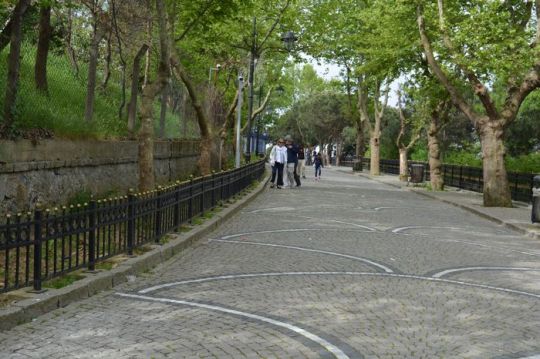
Constantinople is healthy on the whole
Climate.—The climate of Constantinople is healthy on the whole; but, being very variable, is not suitable for people suffering from pulmonary affections, or for persons of full habit of body. The best time for visiting Constantinople is in the months of April and May, and September and October, just before, and just after, the hot season.
Population.—The population of Constantinople, in the utter absence of any official figures, cannot be given with any degree of accuracy, but may be set down at about 1,200,000.
Historical Sketch. — Tradition assigns the foundation of Byzantium to a band of settlers from Megara, under a leader named Byzas, in 658 B.c. The oracle of Apollo at Delphi, which they had consulted, foretold that those who set out would be certain to prosper on the Thracian shore, near the Euxine, where there was an abundance of game. The Megarians inferred that the oracle intended to designate a spot near the mouth of the two streams Cydaris and Barbysus (the present ‘ Sweet Waters of Europe’), and therefore proceeded there.
They were sacrificing an ox, when a crow swooped down and carried off a piece of the sacrificial meat, which a shepherd subsequently told them it dropped at Cape Bosporus (now Seraglio Point). The Megarians, taking this act of the bird as a good omen, immediately removed to the promontory, where they settled and built a town called Byzantium, after their leader Byzas. According to another tradition, the oracle enjoined Byzas and his followers to settle opposite the city of the blind,’ in allusion to a former party of emigrants who, overlooking the advantageous site on the promontory, had settled at Chalcedon daily tours istanbul, now Kadi Keui.
Its advantageous situation soon exposed the city to the covetousness of its neighbours and of other nations, and it was in turn attacked by the Thracians, Bithynians, and even the Gauls; while it was repeatedly invested by the Persians, who, during the campaign of Darius against the Scythians, compelled the town to surrender to Otanes, one of Darius’ generals, and subsequently burnt it.
Battle of Plataea
After the- battle of Plataea (479 B.c.) the Lacedaemonians under Pausanias took Byzantium from the Persians, and refounded the colony. Seven years later it was taken from the Lacedaemonians by the Athenians; but in 440 B.c. it revolted and returned to its former allegiance. It was again besieged and taken by Alcibiades in 408 B.C. The city continued in the possession of the Athenians till after the battle of Aegos Potami in 405 B.C., when it was recovered for the Spartans by Lysander. A few years later Xenophon and his Ten Thousand passed through it on their march from Persia. In 390 B.C. it was once more brought under the influence of Athens. Philip of Macedon laid siege to the city in 340 B.C., but was diverted by the succour sent by the Athenians, who had at last been roused to energy by the fiery eloquence and invectives of Demosthenes against the Macedonian conqueror.
During the siege, however, the city was very near being taken by a night assault through subterranean passages or tunnels constructed by Philip’s engineers; the design was only frustrated by the rising of the new moon, which caused the dogs to begin barking; the noise aroused the sleeping garrison, who succeeded in repulsing the Macedonian surprise. Out of gratitude to Luna, whose rays had been the means of saving their city, the Byzantines adopted the crescent as their emblem, marking their coins with it, and the Turks in their turn adopted it from them after the conquest of Constantinople.
0 notes